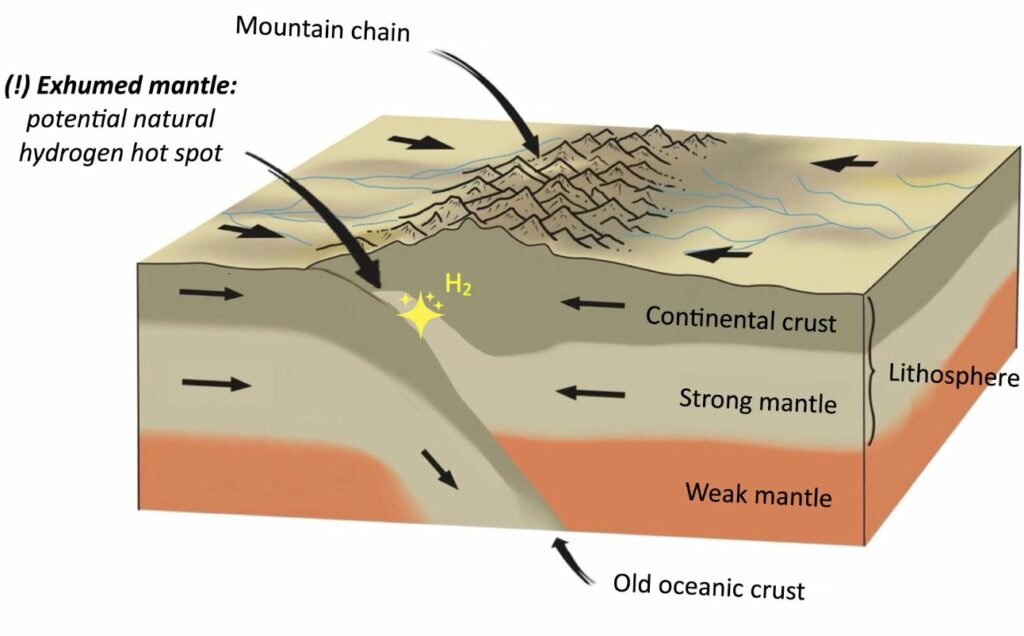Researchers at the GFZ Helmholtz Centre for Geosciences have identified potential natural hydrogen (H2) reservoirs using plate tectonic simulations.
Led by Dr. Frank Zwaan of GFZ’s Geodynamic Modelling section, the study confirms that mountain ranges with exhumed deep mantle rocks represent promising locations for large-scale H2 generation and accumulation. The findings, published in Science Advances, suggest that these geological environments could be viable for natural hydrogen extraction.
The research team applied numerical plate tectonic modelling to examine the formation of hydrogen through serpentinization, a reaction between mantle rocks and water that produces H2 gas. The simulations tracked mantle rock exposure during rifting and mountain-building events, revealing that exhumed mantle rocks in mountain ranges offer more favorable conditions for hydrogen generation than those in rift basins. According to the study, mountain ranges maintain lower temperatures (200-350°C), which enhance serpentinization potential and facilitate larger H2 accumulations.
Findings indicate that hydrogen generation capacity in mountain ranges can be up to 20 times greater than in rift basins. While rifting events allow mantle rocks to rise, the study confirms that mountain-building processes lead to more stable H2 reservoirs. Additionally, sedimentary rocks in these environments act as natural traps for hydrogen, supporting the possibility of economically viable accumulations.
The study reinforces current exploration initiatives in regions such as the Pyrenees, European Alps, and Balkans, where natural hydrogen emissions have been observed. Dr. Sascha Brune, head of GFZ’s Geodynamic Modelling Section, states that these findings enhance understanding of hydrogen migration pathways and microbial interactions that influence reservoir formation. Lead author Dr. Zwaan highlights the significance of determining the timing of geological processes to assess potential extraction sites.
The study provides critical insights for advancing natural hydrogen exploration. While research continues, the identification of mountain ranges as prime locations for hydrogen accumulation marks a significant step toward evaluating natural hydrogen as a commercially viable energy source. According to the publication, ongoing efforts will focus on refining exploration strategies and understanding key geological controls on H2 reservoir formation.
Stay updated on the latest in energy! Follow us on LinkedIn, Facebook, and X for real-time news and insights. Don’t miss out on exclusive interviews and webinars—subscribe to our YouTube channel today! Join our community and be part of the conversation shaping the future of energy.
